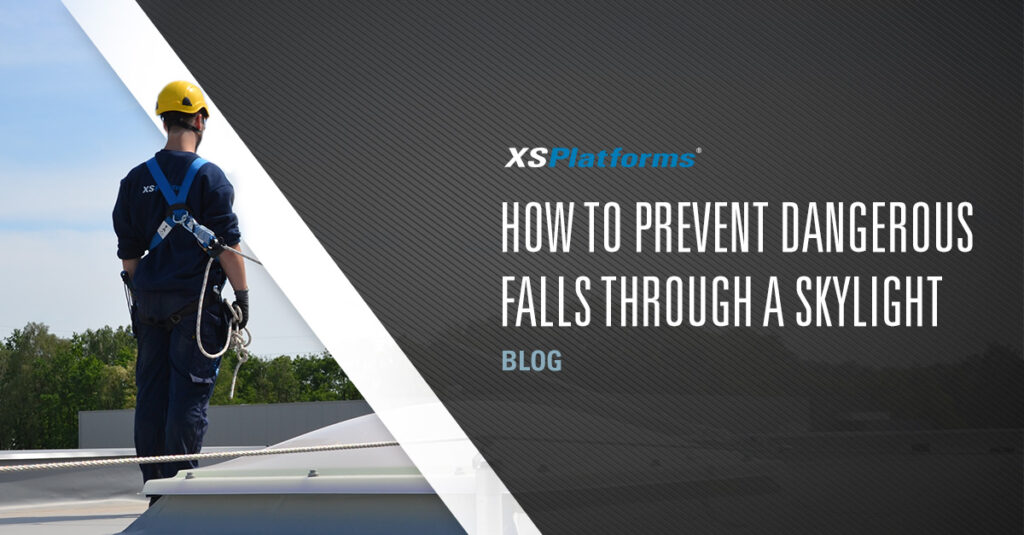The edges of a roof are not the only areas where the danger of falling is present. In this post, we will delve into another frequently encountered fall hazard that requires consideration when performing work on a flat roof.
Falling through a skylight
For many, the danger of falling through a skylight is less obvious than the danger of falling off the roof edge. But it is with good reason that in many countries, lawmakers look at roof lights as holes in the roof and expect building owners to safeguard them as such.
People often mistakenly perceive skylights as safe. Whether it concerns a plastic dome or a skylight made of glass: it’s very hard to tell whether a skylight is able to carry a load. Therefore, building owners will have to rely on common sense in many situations. In other words: they’ll have to assume skylights are unsafe, unless they are able to prove otherwise.
If a person were to fall through a skylight, the severity of the consequences would be significant. This holds particular weight due to the fact that skylights commonly find their installations on roofs or within areas boasting high ceilings, such as warehouses or factory halls.
Building owners
Building owners should know that fall hazards caused by skylights are real and often underestimated, and that it is their responsibility to protect the people working near skylights.
A worker being close to a fall-through hazard without proper fall protection is unquestionably unsafe. Of course, the safety of the people underneath the roof is at risk as well.
What steps can employers take to prevent workers from falling through skylights?
Guarding skylights
First of all, it’s possible to place a certain type of cover over the skylight, such as the Kee Cover. Workers can attach this protective screen onto the roof, creating an overlaying panel that prevents them from falling through. Of course, it’s necessary to cover each individual skylight on the roof. Skylights come in many different forms, so covering them may not always be an option.
Frequently, workers utilize freestanding guardrails like the Kee Dome to actively prevent approaching skylights. This straightforward fall protection method is applicable for skylights of varying shapes and sizes. They can be arrangement around one or multiple skylights, effectively securing all of them simultaneously.



